Well I attempted to have more done today on the pressing tool but has a coworker stop in asking for help on his 1990 Toyota 4-runner. His front mind seal was leaking pretty bad and he tried everything to break the 18mm harmonic balancer bolt loos with no luck.
I'll start with what I did get done on the press tool.I used 2" round CR cut to 5.500" and indicated on the lathe. Faced and turned two steps. The smaller 1.5" step fits inside the bushing to be presses out and will also serve to press in the replacement. The 1.5" ensures the tool is lined up during the initial setup. The second step is .065" smaller than the OD of the bushings and 3.5" long to match the length of both bushings. The problem is the bushings are for the pivot block located in the main lower body. The work needs to be done in place
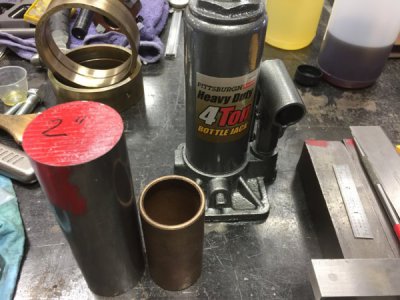
The layout:
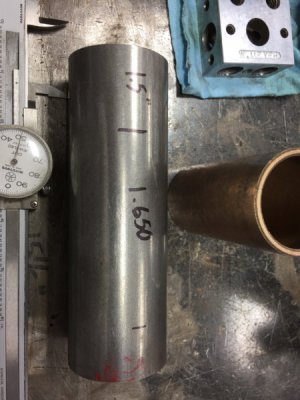
Man I love this chuck.
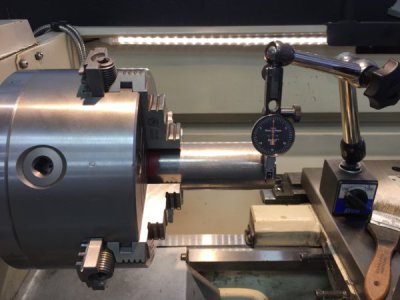
Took .040" DOC at 750 RPM with a feed rate of .009/rev so kind of fast. On the 3.5" long step the chips breaker was not working with the federate producing a continuous chip from start to finish. I made some feed changes and had manageable chips after that.
Look at this accident waiting to happen, a 15'-6" chip!
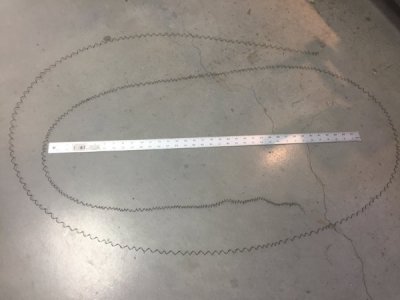
The surface finish was just pretty as could be for CR, I just couldn't get comfortable with those long razor blades.
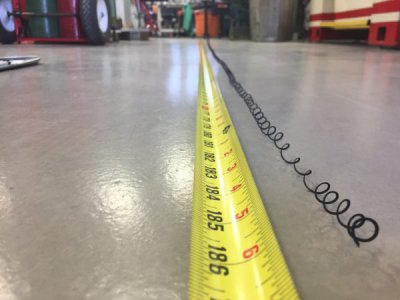
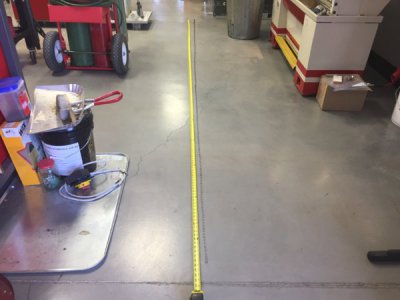
Anyway, the tool came out nice. The jack end was bored to fit the the shaft keeping everything lined up.
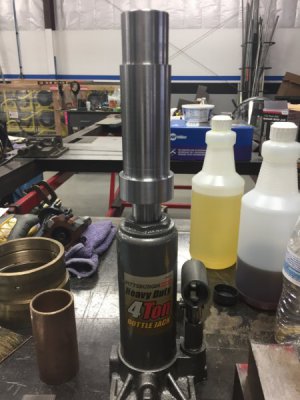
Here you can see how the bushing will be pushed against the longer stepped shoulder.
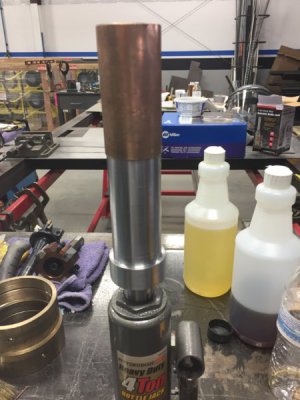
And lastly the bushings on main body with the tool inserted.
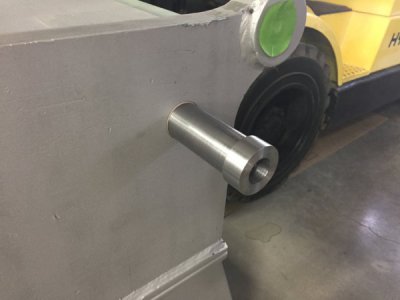
So by now its clear that a solid object will be required for the jack to anchor to. The forklift will be the anchor or aka potable press

.
So back to the Toyota, I tried every trick I could think of to break that darn 18mm bolt including heat. Breaker bar against the passenger side frame and stater bump (coil wire disconnected) My big A$$ impact with 130 PSI set on #5 for max. Nothing was working including a 48" cheater on a 3/4" breaker bar. It seemed we where just turning the engine, Yes, it was in gear and e-brake set, but the darn crank was rotating. Then the light bulb went off in my minds eye. I needed to restrain this damn thing and I remembered I had some aircraft cable left over from hanging the shop ductwork. I also had three cable clamps. I threaded the cable through the harmonic balancer and around the passengers side frame three times. Using two clamps on the bottom and one on the top three layers. Grabbed the 48" cheater and pulled, I thought The bolt head had broke but it was the bolt breaking loose. The owner had been spraying penetrating oil for the past week but the large built in washer prevented a direct shot.
I wanted to share the set up with anyone interested incase you find yourself in the same bind. It worked well and the front seal and oil pump O- ring replaced.
Looking from the top.
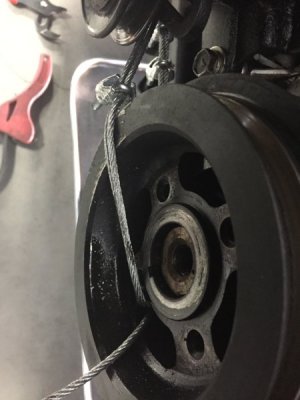
Bottom view. No way the crank can turn CCW allowing the bolt to be removed.
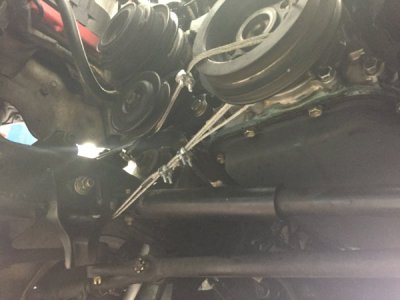
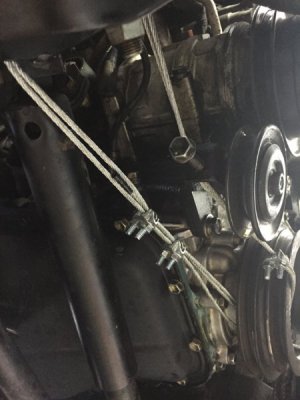
Thats all for now fellas, thanks for viewing.
New machine arrives tomorrow, I'm so excited, don't think I'll sleep a wink tonight

.
Turn and Burn,
Paco


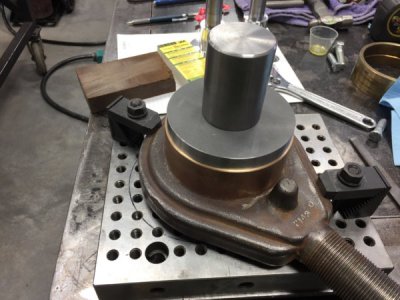
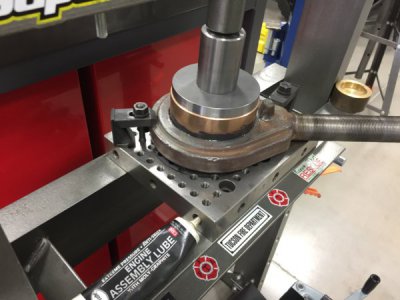
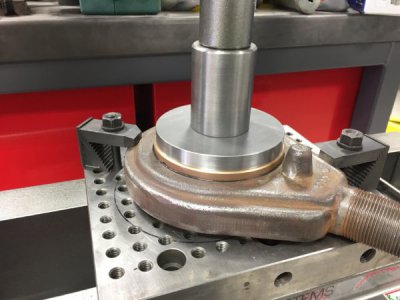
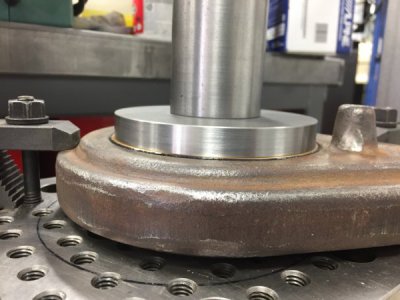
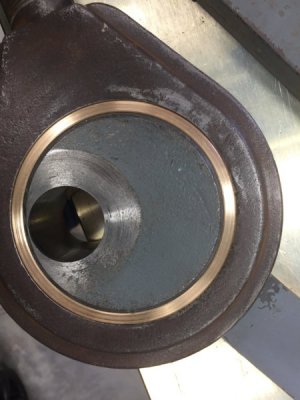
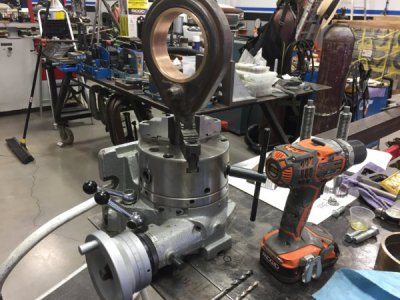
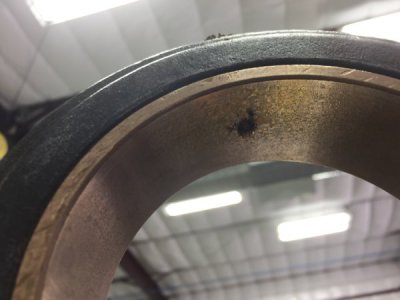
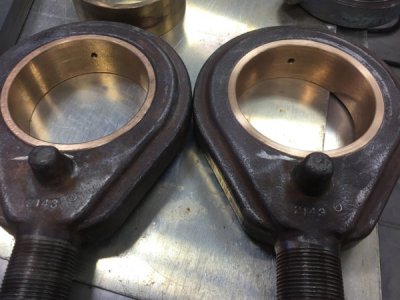
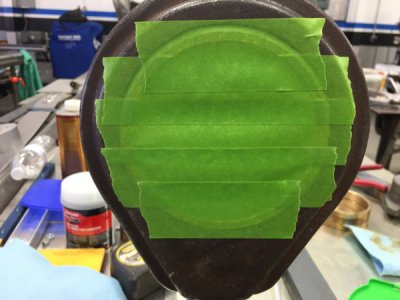
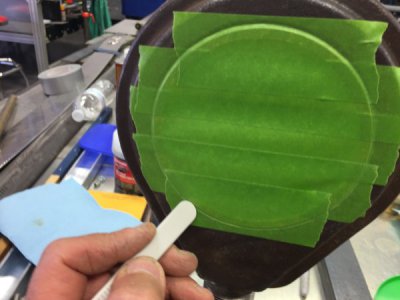
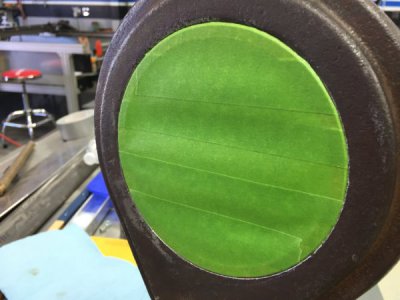
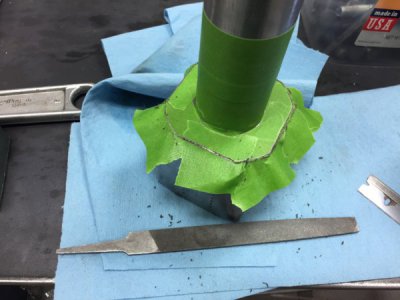
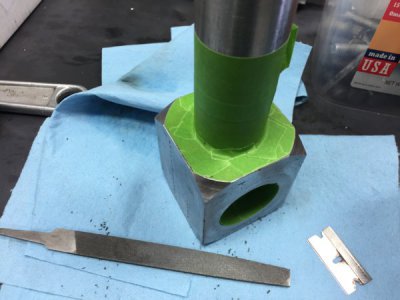
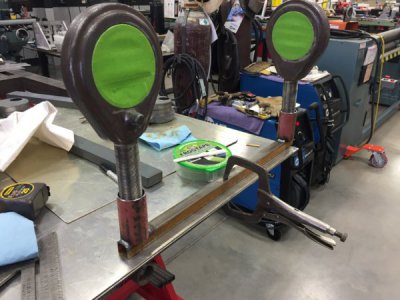
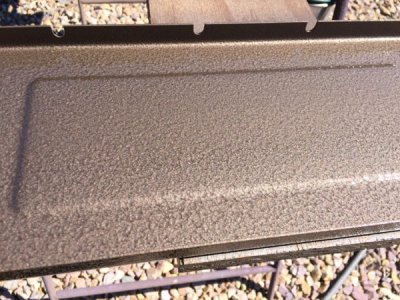
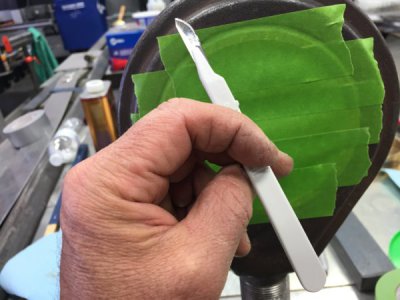
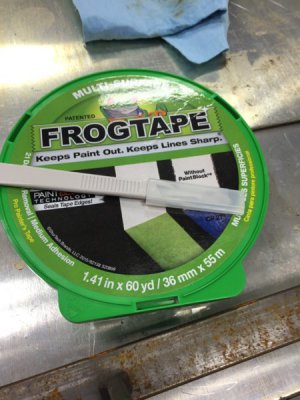
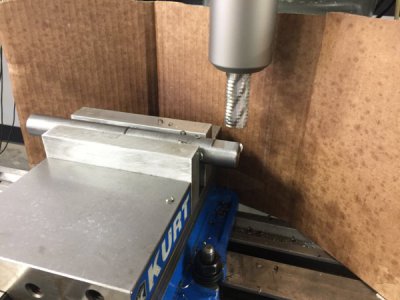
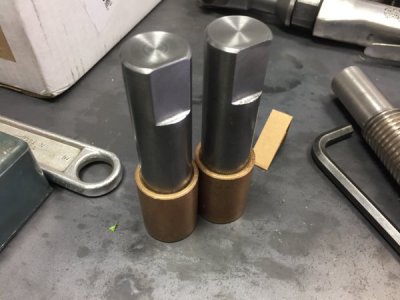
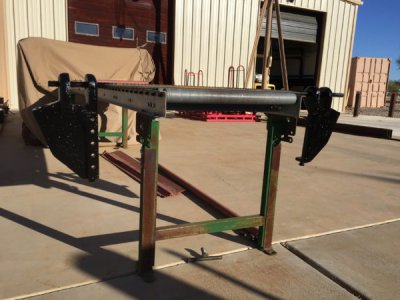
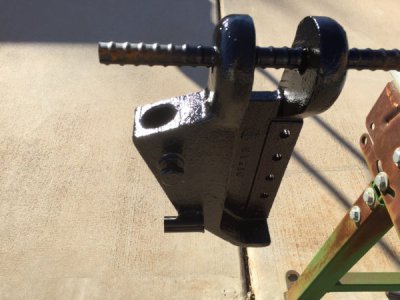
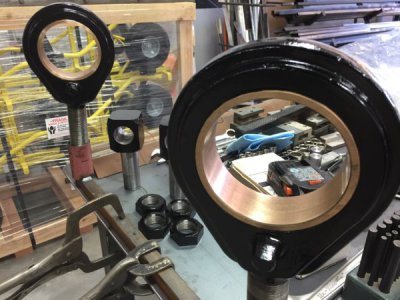
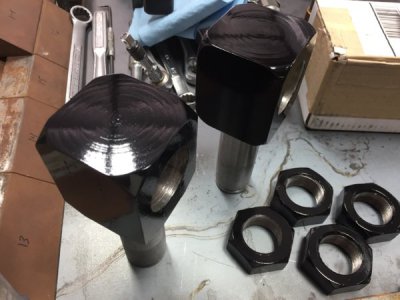












 .
.